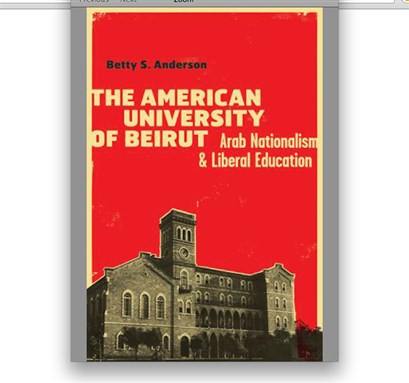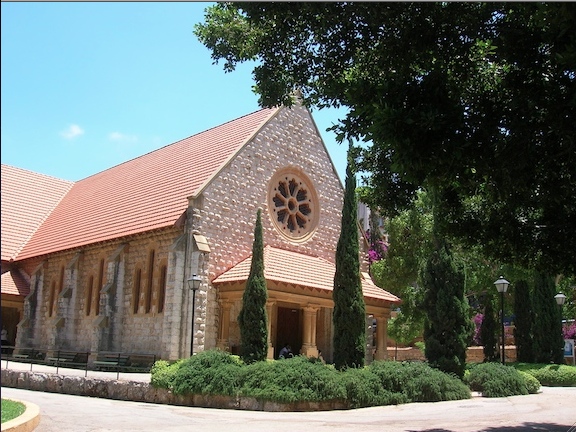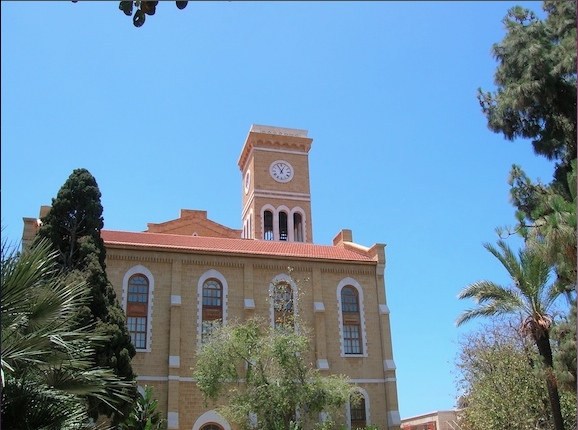Akram Fouad Khater, Embracing the Divine: Gender, Passion, and Politics in the Christian Middle East. Syracuse: Syracuse University Press, 2011.
Jadaliyya (J): What made you write this book?
Akram Khater (AK): This book was partly a happenstance, and came partly out of a keen awareness of a gaping hole in Middle Eastern scholarship. The happenstance is common enough in scholarly research. Tired of the texts I was reading at the Bibliotheque Nationale for my PhD dissertation, I turned to the Arabic card catalog to browse for interesting manuscripts. I stumbled upon one titled Aghrab imra’a fil ‘alam [The Strangest Woman in the World]. With such an unabashedly over the top title, I simply had to order the manuscript, and with that I began my journey into the history of Hindiyya al-`Ujaimi, a visionary Maronite nun of eighteenth-century Aleppo and Lebanon.
But what became clear as I delved deeper into her story is the almost total absence of any historical narrative about Christians in the early modern and modern Middle East. The glaring absence compelled me to keep working on this book in an attempt to bring new voices and perspectives into the history of the Middle East. Specifically, I aimed to dislodge a scholarly gaze that appears to have become transfixed on Islam and Muslims in the region. While this was understandable in the wake of 9/11, this hyper-focus was still troubling to me for two reasons. First, it seemed to me that we were entering a neo-Orientalist phase that was certainly more sophisticated but that still reduced the complexity of the region to Islam. Secondly, this preoccupation completely elided non-Muslims from any role in the history and society of the region, which struck me as completely at odds with the realities on the ground.
J: What particular topics, issues, and literatures does it address?
AK: The book uses the life story of Hindiyya by way of refracting the larger story of the construction of new Christianity in the Middle East. The eighteenth century was a vibrant intellectual period—a religious Nahda before the nineteenth century Nahda, if you will. The confluence of Latin missionaries and the rise of a Christian bourgeoisie in the Levant led to a revivalist movement within local churches. The process was quite tumultuous, as the shaping of a new Christianity in the region became the center of competition (and collaboration at times) between the Roman Catholic Church and the local churches over the direction of modernization efforts. These were attempts to reform Levantine Christianity and to transform it from a diffuse religious culture to a disciplined and disciplining institutionalized religion. In the words of Wilfred Cantwell Smith, Latin missionaries and local prelates sought to objectify religion by changing the definition of religion from “faith” (a mixture of localized folk traditions and the most rudimentary of scriptural knowledge) to systematic ideas and practices meant to institute and demand an individual recognition of God.
Hindiyya’s religious charisma, visions, and popularity (or notoriety) placed her at the center of a confluence of Latin missionary, Maronite, and Vatican histories. As such, her tale is a historical journey through the politics of gender and religion within the Maronite and Roman Catholic churches during the eighteenth century. So in addition to seeking to remedy the elision of Christians from Middle Eastern historical narratives, this work places gender at the center of the making of modern religious institutions and theology.
J: How does this work connect to and/or depart from your previous research and writing?
AK: In period and topic, this is a significant departure from my earlier work, which focuses on the history of Middle Eastern migrations to the United States. In my earlier book, Inventing Home, I wanted to tell the story of migrants who left bilad al-sham and travelled to the Americas in the late nineteenth and early twentieth centuries. More particularly, I was interested in those who came back to the Levant after years in the mahjar and wanted to know how they helped shape a new middle class in Lebanon. On the other hand, as with my previous writings, Embracing the Divine looks to gender as the analytical tool through which to refract social, economic, and political tensions and structures.
J: Who do you hope will read this book, and what sort of impact would you like it to have?
AK: While the first chapter frames the theoretical structure of the book, I have written the remainder to be accessible to a general audience, with the hope that it will be read by a wide variety of people. In and of itself, Hindiyya’s tale is engrossing; a singular woman who against all odds transformed the Maronite church and its relationship with Rome over the course of the eighteenth century. Compelling though it may be in its cinematic scope—resplendent with the requisite villains, mysterious events infused with sinister and sexual tensions, tragedy, and pathos—Hindiyya’s story holds within its folds a larger tale about the construction of a new Christianity in Bilad al-Sham. This is a story that will interest those trying to understand Christianity and Christians of the region.
At another level, this book will engage readers who are interested in the history of Catholicism. The predominant representation of Christianity as a “Western” subject is implicitly questioned by illustrating how Hindiyya, along with other men and women of her generation, Arabized Christianity even as they Christianized Arabic. Their evocative and expansive use of Arabic to publicly describe their profoundly Christian experiences (greatly aided by the establishment of the first Arabic printing press in the early eighteenth century) was one element of this movement. Finally, this book will appeal to scholars who are trying to better understand the project of "modernity" in the Middle East.
So I wrote this book in the hope that Hindiyya`s story will be resurrected, that we will begin to take Christians in the Middle East seriously from a scholarly perspective, that we will move beyond imagining Christianity to be a "Western" subject, and that the book will raise profound questions about the modernization of the Middle East.
J: What other projects are you working on now?
AK: Currently, I am working on a public history project. The first part of this project is to research, preserve, and publicize the history of Arab-Americans in North Carolina. To date, we have finished a documentary on the topic that was just released in DVD form and is available here. The next stage will focus on designing an exhibit about this same topic, as well as an online archive to house all of our collected material. Out of this pilot project, I will be writing a book on the history of Little Syria, the earliest Arab-American colony in the US.
Excerpt from Embracing the Divine: Gender, Passion, and Politics in the Christian Middle East
“On June 6th [1753] Sister Hindiyya, the mother superior of the Sacred Heart of Jesus convent, was summoned and asked about the names of her parents, her place of birth and her age…She answered, my father is called Shukrallah and my mother Helena [they are] from Aleppo, and I am thirty-three years old which I complete on the Feast of Transfiguration.” It was a simple answer to the first question posed by the apostolic inquisitor, Fr. Desiderio di Casabasciana. He was delegated by the Vatican to determine whether she was truly a visionary who mystically and physically communed with Christ or a woman deluded by the devil. Over the next ten days, in a stone and sparse room at the convent with three wooden chairs and a table at which sat Desiderio’s secretary (Fr. Raymondo) recording the proceedings, Hindiyya answered one hundred and sixteen questions. At times the scribe noted that she was visibly agitated reluctant to answer, but for the rest of her testimony she appeared poised during those morning, afternoon, and evening sessions. The tone of questions and answers was, for the most part, straightforward, especially when contrasted with the emotionally ridden textual rendering of her journey into the mystical union with Christ. There was almost a routine aspect to the questions of Desiderio and answers of Hindiyya—or at least a shared understanding of the boundaries and language of a religious inquisition. Altogether, her answers delineated a sequence of secular and spiritual events that began with her birth in Aleppo and ultimately brought her to that room on top of a mountain in Lebanon, overlooking the Mediterranean. But like her first answer, all her responses were abridgements of an expansive and intricate set of events that had earned Hindiyya years of notoriety and fame, support and animosity, and on June 6th the inquisitorial gaze of the Vatican.
On the surface, this inquisition tells an inexorable tale of one young woman’s religious devotions, visions, prayers, ascetism and struggles against her sins, and most critically her visions of, and tangible encounter with, Christ. However, in looking through her answers to the scaffolding beneath we begin to see a larger story populated by Jesus, patriarchs and priests, merchants and missionaries, family and community. Her hagiography and Sirr al-Ittihad—the auto-biographical account of her mystical union with Christ—also recount similar teleological narratives albeit with different emphases and very different language. Certainly the nature of these documents lends itself to selectivity as they aim to smooth out the wrinkles of a complex life into a saintly linearity. Yet, to varying degrees all these texts are fraught with a tension that reflected the contradictions which coursed through Hindiyya’s life in Aleppo and beyond. On one hand, we read of a woman who was enthralled with visions of her “beloved” Jesus, and who ultimately wanted nothing but to be evermore in his presence. Yet, she was deeply uncertain and burdened by a vocation that was at extreme odds with her prescribed role as a young Aleppan woman, and that drew the ire and ridicule of family and acquaintances. Publicly she was expected to behave in a manner becoming of the elite status of her family, and of the expectations placed upon her as a young woman growing up in such an environment. Privately, she increasingly wanted nothing to do with the trappings of wealth or the social life of the comfortable elites, as she sought a closer relationship and knowledge of Christ. Hindiyya was thus torn between living as a bourgeois Aleppan and a visionary Christian. Her very personal dilemma was borne out of two cross currents that tugged at her throughout her life in Aleppo: the secular life and materialistic mores of an emergent Christian elite in Aleppo, and a religious revivalism stoked by Latin missionaries and local clergy. Caught in the middle, Hindiyya found it increasingly difficult to conceal or sustain her private struggles, and ultimately she had to make a public choice between the two.
[Excerpted from Embracing the Divine: Gender, Passion, and Politics in the Christian Middle East, by Akram Khater, by permission of the author. Copyright © 2011 by Syracuse University Press. For more information, or to purchase this book, please click here.]
![[Cover of Akram Fouad Khater, \"Embracing the Divine: Gender, Passion, and Politics in the Christian Middle East.\"]](https://kms.jadaliyya.com/Images/357x383xo/khater.jpg)















